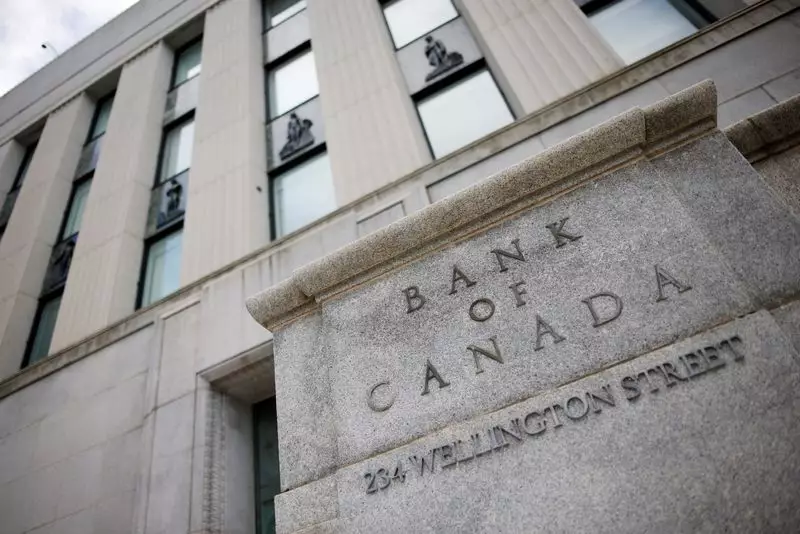In a noteworthy move that has captured the attention of economists and business leaders alike, the Bank of Canada has reduced its benchmark interest rate by 50 basis points, bringing it down to 3.75%. This decision is significant not just because of the magnitude of the cut but also due to the broader implications it holds for the Canadian economy. With inflation rates hitting lows not seen in recent years and a demand for goods and services remaining tepid, the central bank’s actions signal a transition towards a more accommodating monetary policy following a long battle against rising prices.
The current rate reduction marks the fourth consecutive cut since June, highlighting a shift from the previous aggressive rate hikes aimed at curbing rampant inflation. After pushing interest rates to a two-decade peak, the Bank of Canada now finds itself in a position reminiscent of pre-inflationary periods, with inflation rates reported at a mere 1.6% in September, comfortably below the targeted threshold of 2%. Governor Tiff Macklem expressed optimism during a press conference, affirming that the measures taken have yielded positive outcomes, allowing Canadians to embrace a “good news story.”
Despite this positive outlook on inflation, the reality of the economic landscape is less encouraging. Demand across various sectors remains sluggish, and consumer confidence appears fragile. Macklem acknowledged these challenges, suggesting that the recent interest rate cut should stimulate demand, fostering stronger economic growth as the country moves forward.
This shift in Canada’s monetary policy aligns with similar trends observed in the United States, where the Federal Reserve has also embarked on a rate-cutting trajectory recently. Analysts speculate that the Federal Reserve’s actions may have a ripple effect in Canada, potentially influencing future decisions by the Bank of Canada. The prospect of further rate cuts grows stronger, with economists eyeing the possibility of another substantial reduction as early as December. Such predictions are underpinned by the logic the Bank has presented regarding the needs of the current economic climate.
Notably, money markets anticipate at least a 25-basis-point cut during the last monetary policy announcement of the year, with speculative discussions suggesting that a further 50-basis-point cut is on the table. Investor sentiment is reflected in market reactions, revealing a modest decline in the Canadian dollar and a slight easing of yields on Canadian government bonds following the announcement.
However, economic analysts, including those at CIBC, have warned that while expectations for further cuts are justified, they are far from certain. The emphasis remains on the Bank’s interpretation of the “neutral rate,” which defines a threshold at which monetary policy neither restricts nor stimulates economic growth. This introduces an element of caution, as further rate cuts will depend heavily on economic indicators that the Bank continues to monitor closely.
The Bank of Canada’s revised economic forecasts reveal an anticipated annual growth rate of 1.5% for the third quarter, down from initial predictions of 2.8%. While the overall economic growth forecast for the year remains at 1.2%, the effectiveness of rate cuts hinges on a turnaround in demand and increased consumer spending, which have been lacking. The central bank acknowledges the precarious nature of inflation targets, stating that deviations could pose risks in the future.
Macklem’s statements reflect a broader consensus that maintaining low and stable inflation is critical for economic stability. The Bank remains vigilant to ensure that inflation levels hover around the ideal 2%, viewing this as pivotal for the functioning of the economy.
The Bank of Canada’s recent decisions embody a calculated approach to revitalizing a sluggish economy while managing the delicate balance of inflation control. As the monetary policy landscape continues to evolve, the road ahead will require careful navigation through shifting economic indicators and external pressures. The effectiveness of recent rate cuts will ultimately determine whether Canada can emerge from this phase of uncertainty with renewed resilience and growth.
The Bank’s strategy represents a significant recalibration of priorities within Canadian monetary policy, moving from combating inflation to fostering economic recovery, reflecting a moment of potential but requiring careful execution and ongoing assessment.

